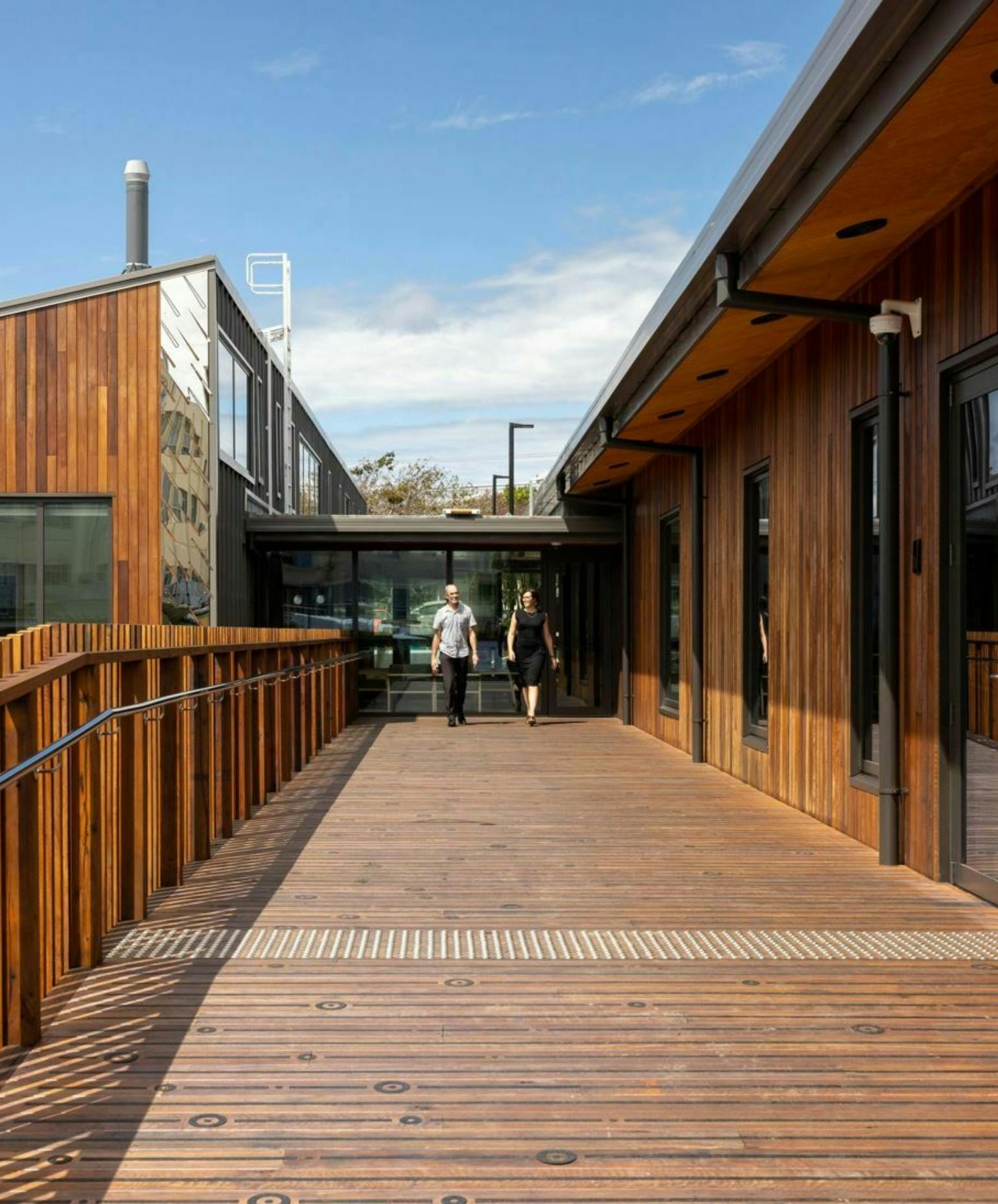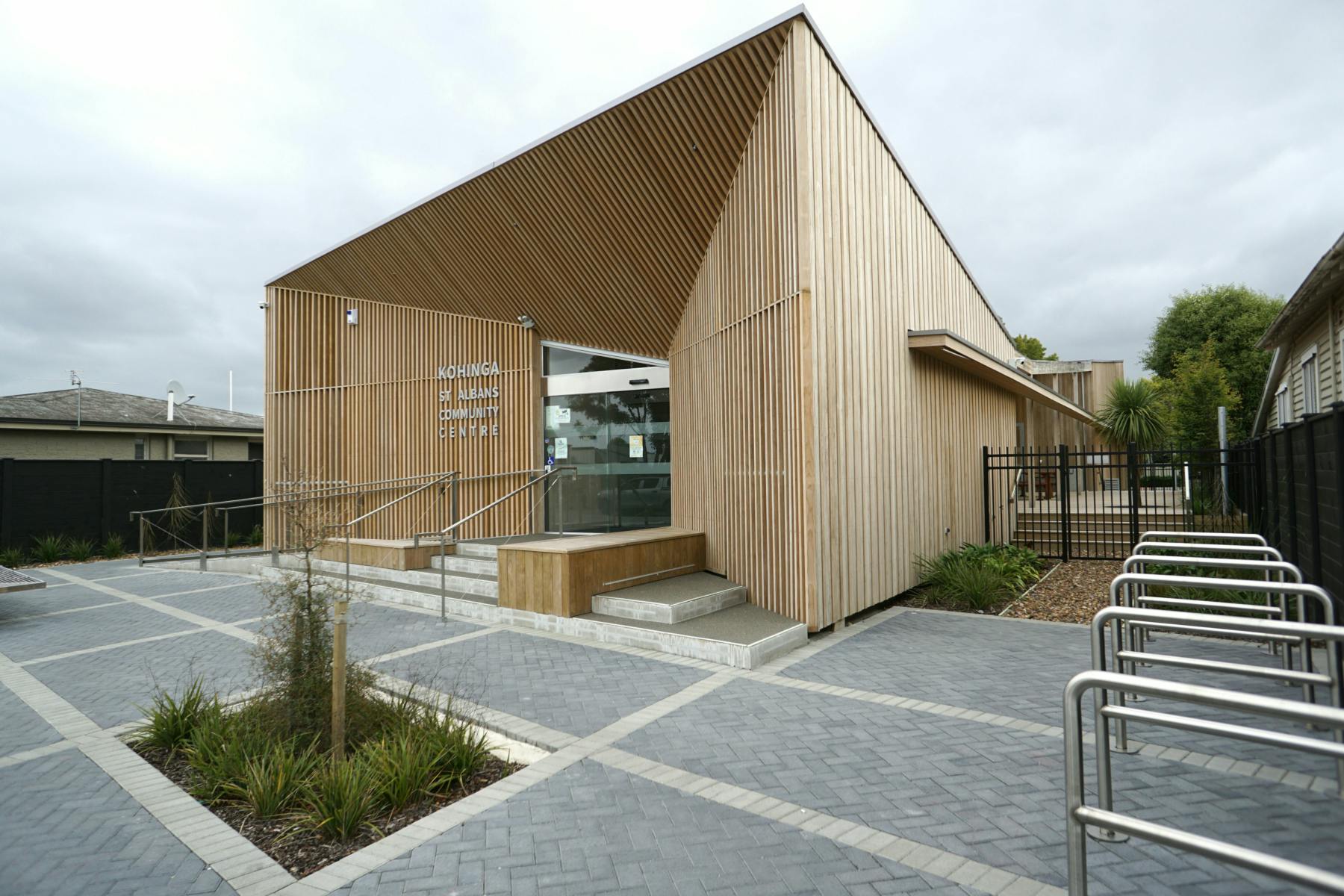In this subject overview
This is a high-level introduction to the concepts surrounding the durability of timber and what sort of careful planning, design and construction is required to maximise longevity and sustainability in New Zealand buildings.

This is a high-level introduction to the concepts surrounding the durability of timber and what sort of careful planning, design and construction is required to maximise longevity and sustainability in New Zealand buildings.
Introduction
Timber is used in residential, commercial, and industrial construction. The durability of timber depends on the species, construction detailing, heat & mass transfer (building physics), installation and exposure during construction, treatment, and maintenance. Ensuring the longevity and sustainability of timber structures requires careful planning, design, and construction.
Durability is the ability of a material to resist decay and degradation over time. To be durable and sustainable in buildings, materials must:
Poorly executed timber construction can pose a risk of structural failure, promote mould and or rot growth, and require frequent maintenance or replacement.
Durable timber construction will provide long-lasting, aesthetically pleasing, and eco-friendly solutions, reducing the environmental impact.
It is important to differentiate between mould and decay. Mould may be harmful to human health but does not affect structural performance, whereas fungal decay (also known as rot) reduces the structural integrity of the material itself.

Achieving natural durability in timber design and construction requires careful selection, handling, and detailing of the wood components. Some species, such as Totara, Redwood, or Lawson Cypress, have inherent natural durability and are more resistant to decay and insects than others. Choosing species that have high natural or inherent durability can enhance the durability and sustainability of timber structures. However, even durable species can degrade over time if not properly handled and detailed. Species that are less durable but well-detailed and constructed are less susceptible to decay.
Intelligent detailing
Detailing for durability should apply best practice techniques in both design and construction to prevent or reduce the exposure of timber to moisture, sunlight, or other damaging factors. It is important to provide detailing that avoids excessive moisture content in timber components. Decay will not occur if the moisture content of the wood does not exceed 18% for a prolonged period.
Detailing to prevent water infiltration includes:
Detailing to avoid condensation includes:
Similarly, avoiding direct contact between timber and soil, concrete, or other wet materials is essential to prevent moisture uptake and fungal growth.
Building physics - the basic principles
Adhering to the basic principles of building physics is best practice to achieve durability in timber structures. Building physics is the science of heat and mass transfer in buildings and is an important tool for predicting how buildings behave regarding heat and moisture transfers and airflows.
Building physics can be used to predict and avoid moisture accumulation and thermal stress by designing buildings with:
Careful design of these features will lead to better indoor air quality, as the risk of mould is significantly reduced, and durability of the timber can be guaranteed.
Understanding the environmental conditions of the site, climate, and occupancy can help designers to provide more durable and sustainable timber structures using building physics tools and resulting predictions of transient and steady-state conditions.
Surface coatings
Surface coatings are usually applied to Engineered Wood Products (EWPs) prior to leaving the manufacturing facility. The purpose of the coatings is to provide temporary protection for the members for a limited period (typically 6 – 10 weeks) by repelling moisture and surface water. Limiting free water on timber elements during on-site storage and erection is important as it assists with maintaining the moisture content of the timber at a level below that which is required to support mould growth (typically 19%).
Coatings are typically grouped under one of two categories:
It's important to recognise that both categories of coatings are temporary, and whilst they can assist with controlling the moisture content of timber during storage and erection on-site, they are not a long-term solution and should be used in conjunction with other construction management measures such as adhesive films, plastic wraps and physical protection from the elements such temporary site tents.
Care should also be taken to ensure that the temporary sealer coating used is compatible with final finishing regimes that may specified for the timber members.
New Zealand building code compliance for durability
Building consent authorities (BCAs) are responsible for enforcing the building code and ensuring the durability and safety of buildings. Failing to comply with the building code can result in fines, delays, or even legal liabilities.
BCAs will request evidence of compliance with the performance requirements of Section B2 of the New Zealand Building Code (NZBC) when issuing a building consent. In broad terms, meeting the building code durability requirements can be achieved either through adhering to the minimum requirements of Clause B2 / Acceptable Solution 1 (B2/AS1) or through the development and provision of an Alternative Solution.
Compliance with Functional Requirements B2.2 Building Materials and Performance, B2.3.1 Building elements can be demonstrated via B2/AS1 acceptable solutions or B2/VM1.
Acceptable Solutions in accordance with Clause B2 can be achieved by conforming with the requirements of Standard NZS 3602 Part 1 (as modified by paragraph 3.2.2 of B2 Durability), NZS 3640 (as modified by paragraph 3.2.3 of B2 Durability) or through Standard NZS 3604 with reference to NZS 3602 (and NZS 3640).
In cases where durability demonstration is outside the scope of an Acceptable Solution, it may be possible to demonstrate compliance via verification method B2/VM1. Proof of performance under B2/VM1 through consideration of the expected in-service conditions includes service history, laboratory testing and comparable performance of similar buildings. If neither of the above is applicable to the building or parts of the building, an alternative compliance can be achieved by the means of an Alternative Solution. This includes evidence such as certification from a registered treatment provider, a building physics study, product labelling, or inspection reports. It is up to the Building Consent Authority (BCA) to request a peer review or to accept the evidence provided as sufficient to demonstrate compliance. A first, pre-application meeting is, therefore, often very helpful to discuss and agree upon the durability path of compliance and expectations of the BCAs.
Light timber-framed buildings constructed using the traditional "in situ framing construction" in accordance with NZS 3604 shall comply with the requirements of B2/AS1 to comply with NZBC B2.3.1 and B2.3.2. The acceptable solutions evaluate the accessibility and ability to maintain the building parts over their intended lifetime. Depending on the evaluation, some timber might require treatment for hazard classes H1.2, H3.1, and H3.2 up to H4 and H5 for in-ground piles. This can be essential to ensure a baseline level of durability against wear, decay and insect damage, and is covered in the scope of NZS3604:2004 as an acceptable solution, to comply with NZS 3602:2003 and the 3.2.2 Modification to NZS 3602 under B2/AS1.
To elaborate, the hazard classes mentioned refer to different levels of environmental exposure that a timber product may face. H1.2 is for some timber used indoors, while H3.1 and H3.2 are for timber used outdoors above ground level. H4 and H5 cover timber used outdoors in ground contact, and H6 is for timber in marine environments.
Given that light timber-framed buildings may be typically exposed to the elements for a long time during construction, it's crucial to protect the timber from the weather as much as possible and, if in doubt, temporarily coat or treat the timber accordingly to provide baseline protection. This involves applying preservatives to the wood, which help to prevent decay and repel insects that could cause damage over time.
Glulam and LVL [ NZS/AS 1720.1:2022 and NZS 3602:2003]
Mass timber as structural beams and columns that are outside the scope of the NZS3604:2004 acceptable solution requires a specific structural design in accordance with NZS AS 1720.1:2022. Until the standard is referenced in the New Zealand Building Code, Section B1, NZS3603:1993 can still be used to demonstrate structural performance.
LVL untreated for interior and treated for up to H3.1 environments, complies if used under the conditions outlined in the acceptable solutions to demonstrate compliance with NZBC B2.3.1 and B2.3.2.
Untreated LVL can be used in the interior of a building if it can be shown to be maintained below 18% Moisture Content of the timber (%MC) (with no risk of moisture penetration conducive to decay). This applies to elements such as mid-floors and sub-floors, as identified in Sections C and E of Table 1 of NZS 3602:2003.
For all other LVL applications, two Acceptable Solution options exist specifically for treated LVL in Clause B2/AS1:
1. H3.1 Azole LOSP treatment satisfying the minimum requirement of H1.2,
or
2. H1.2 glue line treated with a surface spray as per NZS 3640.
LVL shall not be used in environments that would require H3.2 treatment as LVL is not available to be treated to this level.
In accordance with NZS 3602:2003 – 104.5- Glulam may be treated against insects for visual, interior environment but can be left untreated if left visible inside the interior of a building. Most glulam consists of kiln-dried feedstock. The process of kiln drying eliminates any insects inside the timber, however, it does not protect against re-infestation and needs to be therefore considered by the designer if applicable. The designer should communicate to their client to carry out regular monitoring of the visible member. If in doubt, transparent or pigmented paint on coatings can protect against insects and should be considered in areas of concern.
Glulam, to be used in higher hazard classes or concealed glulam, will require an additional treatment to meet requirements of H1.2 or higher to demonstrate compliance with NZS 3602:2003
Cross Laminated Timber (CLT) often also defined as Mass Timber, has no direct path of compliance to demonstrate durability in line with Section B2 of the NZBC, or NZS 3602:2003.
CLT is not referenced in NZS 3603:1993 or in NZS AS 1720.1:2022, so the structural design relies fully on the designer to apply the compliance path of an alternative solution.
Over the past 5 years, radiata pine CLT has been accepted by BCAs as complying with Section B2 of the NZBC when the feedstock is treated in accordance with NZS 3602:2003 and NZS3640.
Following guidance from Engineering New Zealand, most structural engineers will not sign a Producer Statement for compliance with Section B2 of the NZBC, but they will issue a letter stating the grounds for compliance, and it is up to the BCA to accept the evidence provided.
More recently, especially over the past 3 years, CLT species other than radiata pine have been introduced to the NZ market. For example, CLT made from European larch or spruce – untreated or sometimes surface-treated for added durability – has been accepted for use in NZ buildings.
With hygrothermal analysis (often using the WUFI software), a specialist advisor in building physics can provide modelling predictions that the timber in a building design is unlikely to exceed a pre-defined moisture content (%MC) over the life of the building. In most cases, this limit is set to 15%MC, significantly below the 18%MC defined in NZS3602:2003 for timber exposed to a hazard class that would require chemical treatment. This type of data and information has been widely accepted as best practice by BCAs as sufficient evidence to demonstrate that natural durability was sufficient for the in-service conditions of the building.
In order to manage the moisture content of timber during the construction process, a thorough Moisture Management Plan should be specified. This plan must be discussed between all consultants, contractors and suppliers, and be agreed upon. The main aim should be, to mitigate increased moisture content of structural and non-structural timber during the full time of transport, storage and construction before the weathertight enclosure of the building is achieved.